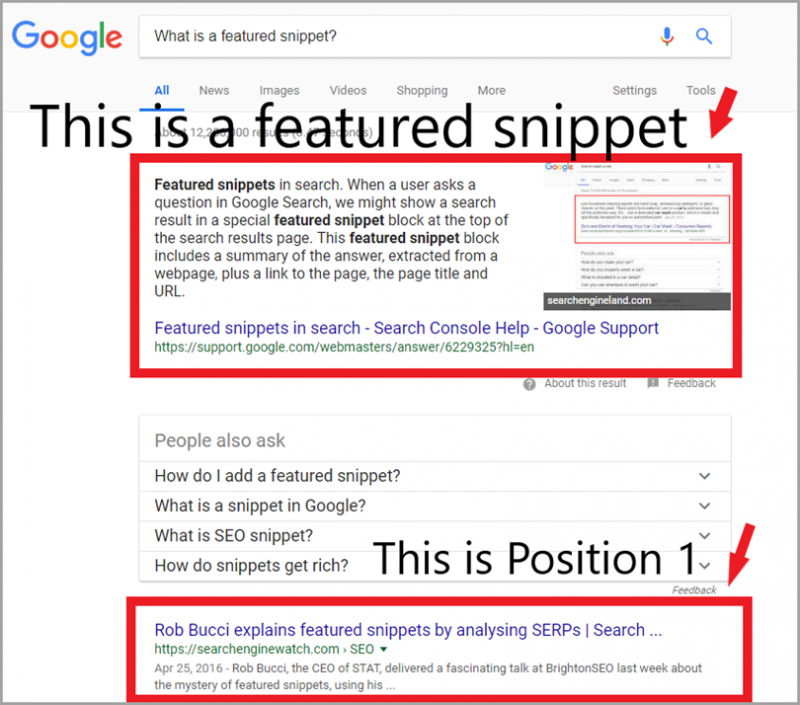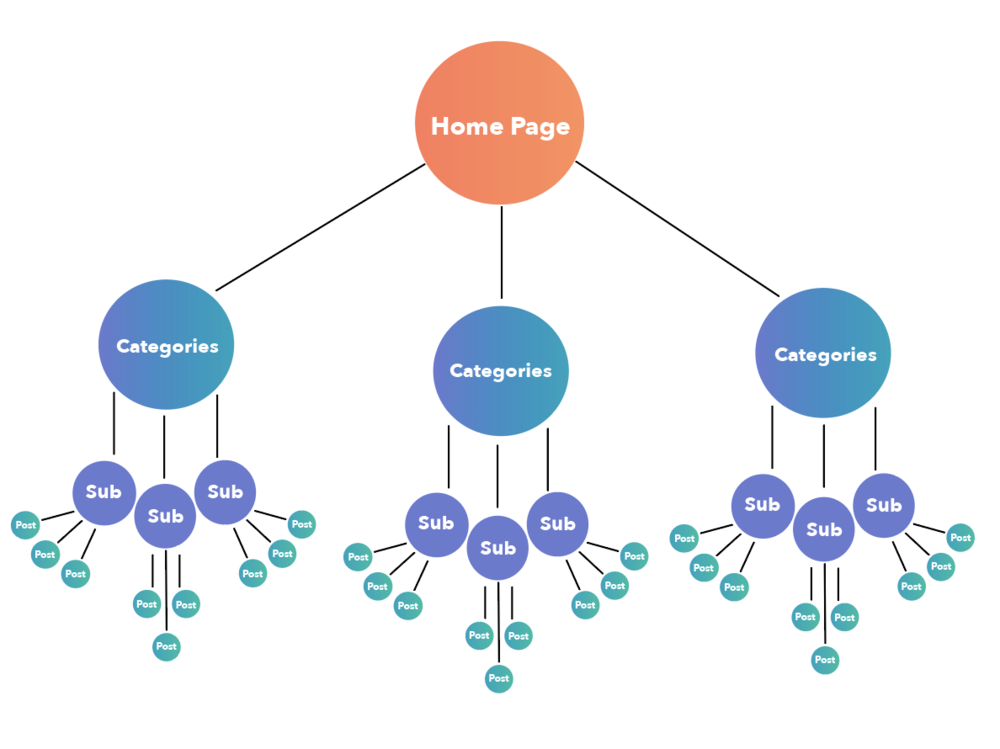Site structure is extremely important, yet commonly overlooked when thinking about SEO possibilities. In a world where “content is king” is constantly tossed around, we sometimes forget that how we present our content can be just as important as the content itself. After all, what's the purpose of great content if no one can find it?

Presentation can be the reason why people — and search engines — engage with your content. A clear, navigable site structure enhances your user’s experience and allows Google to understand your site.
Let’s walk through the many ways site structure impacts SEO, or search engine optimization. This includes a basic overview on how search engines use keywords and find websites, as well as how you can use this knowledge to teach search engines what to look for.
How Search Engines Work
Site structure not only improves aesthetics, but is also vital in Google’s eyes. This post focuses on Google even though there are other search engines like Yahoo! and Bing. At the very most basic premise, Google has three functions: crawling, indexing, and ranking.
Crawling
In order to map out the entire internet, Google first has to discover a URL, which can happen through several means. The search engine can find web pages through following links from a known page to a new page, or from submitting a sitemap. Sitemaps are when you give a blueprint of your site to Google to crawl. Website-creator sites like Wix or Squarespace will automatically tell Google when a new page has been created.
Once Google finds a page, it scans the page to see what it is all about. Crawlers are search engines’ way of “reading” your content, so it can sort and index it. This is where Google makes its decision on where to place the page in search results.
Indexing
The next step after crawling a page is sorting it in a process called “indexing,” where Google analyzes and tries to understand all the content — video and images included — on the page. This is then stored in Google’s massive database.
You can make indexing easier for Google by using:
- Page titles that are concise and clear
- Relevant headings
- Annotation to explain images and videos
Ranking
Google’s job as a search engine is to provide the user with the best answer to their question. Google takes into account location, language, previous computer searches, and other data-driven factors for how they rank the results. Not everyone is going to get the same results from searching the same thing.
Featured Snippet
The featured snippet on Google search is another way search engines have changed over the years. The featured snippet goes above Position 1, meaning it is the most optimal spot when considering SEO — it’s the first thing the searcher sees.
How does site structure optimize for the featured snippet? Your site structure tells Google exactly what to read. By utilizing categories and subcategories, Google can be driven right to the point of your site — and right to the sentence or paragraph that can be used as a featured snippet. Organization in terms of clear titles and consistency in menu and paragraph format can also make things extra clear for search engines as opposed to a chaotic site.

How to Utilize Site Structure for SEO
Site structure allows you to tell Google what you want it to see. It’s like an organized cabinet with labels — a house guest will easily be able to find where your bath towels are. Or think of a preschool play area and how all the cabinets are clearly labeled “markers,” “papers,” and “toys.”
Proper site structure will also allow Google to index pages with ease, which could lead to a higher ranking on the search engine because of the crawl, index, and rank process.
Let’s go over the best practices for creating a site structure with SEO in mind.
Internal Linking for SEO
There are two types of links that can be incorporated into web pages: internal and external. You may be asking what’s the difference? Internal links take the user between one post on your website to another post, video, menu, or any other form of content on your own site. External links drive you to another site.
Internal links between your own content help you help Google read your site. It creates a hierarchy for the Googlebot crawlers to follow so they can index which pages are more important.
There are six reasons internal linking can improve SEO. It allows you to:
- Build a clear site navigation and architecture.
- Create link equity.
- Keep readers on your site longer.
- Give your site authority.
- Re-engage old content.
- limit being your own competition.
Linking is also another way to establish hierarchy. You can guide visitors through your website without them even consciously knowing. Make sure your links are meaningful by creating varying levels of value, trustworthiness, topic relevance, and authoritativeness. You can use any number of these factors to increase the worth of your link. SEOs will respond positively to an equitable link.
By guiding visitors to meaningful pages like research or content of interest through internal linking, you can also maintain a low bounce rate. Keeping visitors for an extended amount of time can significantly help your SEO.
Internal linking also gives you the opportunity to promote older content that may not be getting as many views as well as organize similar content. A lot of your posts are likely to be geared towards specific topics, so you want to make sure that Google doesn't get confused when reading your site. For instance, MotorTrend’s blog is going to have the search term “cars” very frequently and TasteMade is going to have lots of articles on "How to Bake" various bakery items. Since the terms and themes are very similar, Google may get confused, but internal linking will help you avoid competing with your own content.
URL Structure
The URL is a major piece of what Google indexes and how search engines know what your page is about. There are a few simple rules to follow to keep your URL structure relevant, clean, and intentional for the crawlers.
First, it’s important to use a standard URL structure. Since your site should be organized in a hierarchy, your URL should reflect that. The main website name should be the company name. Then, after every “/” should be an explanation of the organization within the category and subcategory. For example, your URL might follow the following format: www.companyname.com/category/sub-category/page/[specific-item].
The URL should be extremely clear and to the point where a user could guess it if they had to. Google will read a simple URL structure with much more ease than one filled with confusing numbers and letters or irrelevant wording.
Try using your primary keyword in the URL. For example, if the post’s title is How To Manage Influencer Social Media Accounts, users are likely to reach you by searching words and phrases like “influencer,” “managing social media for influencers,” and so forth. Your URL should reflect this so it is clear to Google crawlers and benefits your SEO. For example, you may want to format the post's URL like so: www.companyname.com/category/sub-category/manage-influencer-social.
Finally, there are two important details in URL structure that cannot be skipped over. The first step is to use hyphens to separate words. This allows Google to register them as separate words since you can’t use traditional spaces. Another wording trick is to remove unnecessary words like “a,” “the,” “and,” “but,” and other transition or conjunction words.
To summarize URL best practices, you should:
- Use a standard URL structure.
- Keep it simple.
- Take advantage of keywords.
- Be aware of details like spaces and unnecessary words.
What Does an Ideal Site Structure Look Like?
Your site structure should follow a Theme Pyramid structure, which starts with your homepage and then connects to a number of well-organized pages from your site.

Homepage
The homepage should be the heart of your website. Remember in high school science class when they taught you that the mitochondria is the powerhouse of the cell? The homepage is your mitochondria.
Categories
Google suggests websites use the Theme Pyramid structure to best optimize content. This means that for a small to mid-size blog, you should have two to seven categories. Any more than seven could be confusing for both Google and the visitor. The categories should be on the top or side handle of your homepage in a menu format. The menu should be easy to navigate and find from any page on your site.
Subcategories
Subcategories are a great way to practice internal linking. Categories can act as pillar pages with many subcategories off of them, as long as there are not too many categories — this could overwhelm the user and search engine bots.
Keep your subcategories balanced for a cleaner site structure. For example, if one category has 14 subcategories and another category only has two, you may want to think of ways to restructure your content.
Pages
Pages will hold all your beautifully written content, videos, and images. They are all about hierarchy — you need to tell the reader where to look first and where to look after that. The title should be an H1, or the biggest text element on the page. Your subtitles should be H2, the subtitles of those sections H3, and so forth.
Make sure to have a shallow site structure, meaning you shouldn't have to click too many times to get to each page. There should be two or three navigation clicks at most to get to the content the user is looking for.
Site Structure: Do Your Research
Taking the time to research keywords and your competition will allow you to further optimize your site structure. You'll not only get a first-hand look at what's working for others or attracting visitors, but you'll also get valuable insight into how you can improve your site to better serve your user's needs.
What Matters to Your Business in Terms of Terms?
Keyword research is the process of finding and analyzing what words are being typed (or spoken) into search engines and using them to your advantage. It tells you what your audience cares about. Keyword research is also less about the literal word since search engines are becoming smarter and can tell intention even if the correct wording isn't used. It's so important because of site structure hierarchy. Keywords will tell you the general topics that your users are searching for as well as a topic’s popularity.
Competitors Research
Check out your competitors' sites to discover what's working for them and how you might be able to use some of the lessons learned on your own site. Ask yourself these questions:
- What is their site structure like?
- What can you be inspired by from their site?
- What are they doing wrong that you do not want to repeat?
- What changes would you make as a user? As a company?
- What are they prioritizing in their hierarchy?
- Does this feel like a “good” or “bad” site to you as a user?
After reflecting on the competition, it should help you assess your own site. It’s a great idea to look at competitors for research, inspiration, and potential changes.
How to Use Keywords and Competitor Research for SEO
- Make a list of relevant topics for your business.
- Transfer these topics into keywords.
- Try out related search terms.
- Try out longer phrases surrounding these terms.
- Double-check the competition — how high is your competition ranked for these keywords?
- Use a keyword tool like Google AdWords Keyword Planner or SemRush.
Conclusion
Now that you understand the many ways site structure impacts SEO, it's time to reassess your site structure (or if you are just starting now, build a strong foundation). You learned how search engines work and the best practices for optimizing your site structure for them.
The big takeaway is that site structure plays an important role in SEO. Remember, after spending time and effort writing great content, you want Google and your users to be able to find it!